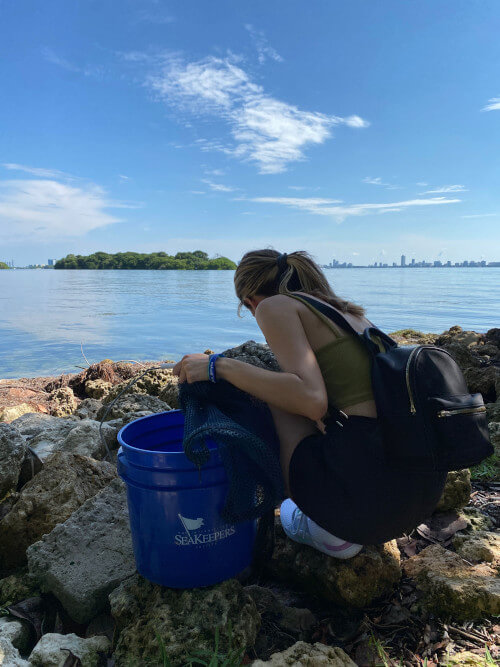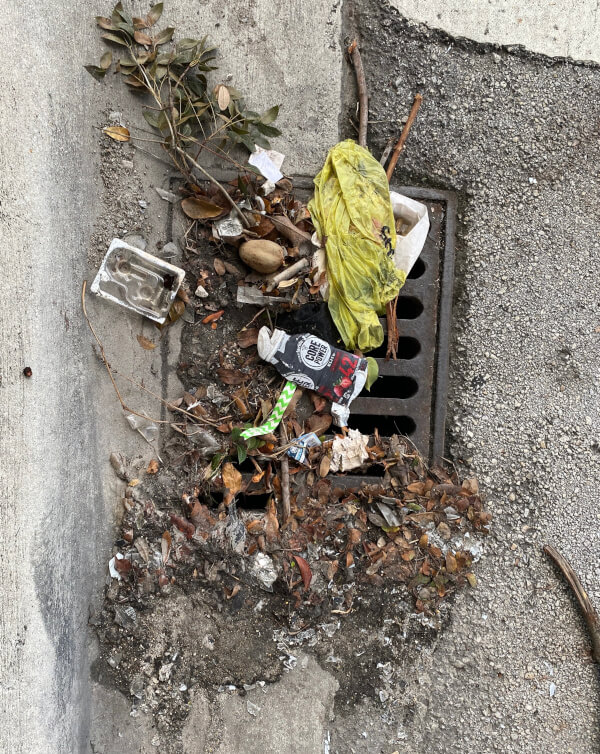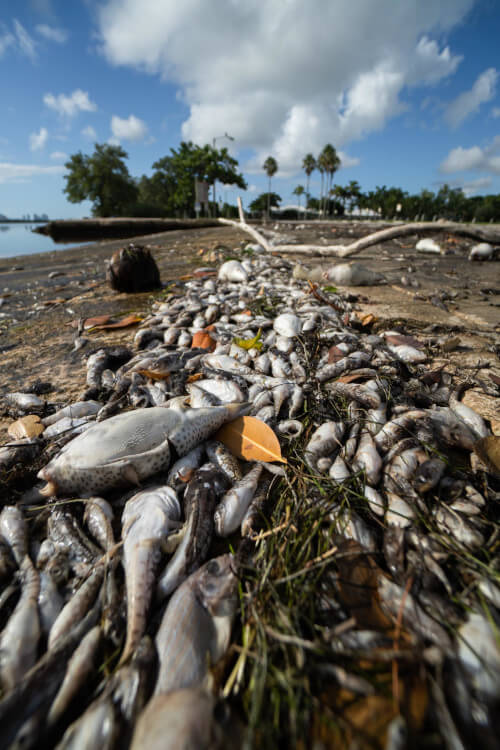South Florida is notorious for its long rainy season and the street flooding that accompanies it, whether it's a short rainstorm or a hurricane passing by. This flooding destroys cars and homes, and can make it very difficult for some people to navigate their neighborhoods. Such flooding is a symptom of a much larger problem in South Florida, storm drains.
When it Rains, it Floods:
Storm drains are the infrastructure that is designed to drain excess rainwater from land to a nearby water source in order to prevent flooding. The grates that can be seen along the curb of a road or in a park lead to a catch basin or storm drain, an underground box that collects rainwater. Once this water reaches a certain level, it enters the large network of drainage pipes that pump this water to a nearby body of water- for Miami, this body of water is Biscayne Bay. Flooding in streets tends to occur because storm drains are blocked by trash and organic material such as grass clippings and palm fronds, preventing rainwater from flowing into the drain pipes efficiently, or in some cases, at all.
Marine Debris Disaster:
Flooding is not the only issue at hand. Trash that is small enough to enter storm drains through the grate on the street is exported directly to Biscayne Bay, where it has a high likelihood of endangering marine life. Marine debris is a massive problem in Biscayne Bay, and over 80% of marine debris comes from land. Plastic makes up a huge proportion of marine debris, and does not ever biodegrade but breaks up into smaller plastics such as microplastics. Microplastics are ingested by marine birds, fish and marine mammals, which can create a sensation of fullness that leads to starvation. Marine debris also poses the risk of entanglement for many species of marine animals, which will likely eventually lead to death.
The rainwater that washes trash into storm drains also brings many other pollutants with it, such as oil and gasoline, fertilizer and pet waste. Fertilizer is used by many residents in South Florida to keep their lawns green and healthy, as it provides the nutrients Nitrogen and Phosphorus to the soil. During the rainy season, fertilizer typically does not have sufficient time to soak into the soil before a storm comes and washes these nutrients directly into the ocean for coastal homes, or into storm drains for inland homes. Excess amounts of Nitrogen and Phosphorus in the ocean helps algae grow and can lead to Harmful Algal Blooms (HAGs), rapid intensifications of the density of algae in a localized aquatic environment. These blooms may release toxins that can be fatal to some marine organisms, or they can create hypoxic conditions by sucking all of the oxygen out of the water as they decay. These hypoxic conditions often lead to fish kills, such as the devastating August 2020 fish kill that resulted in the death of over 27,000 fish in Biscayne Bay. In 2021, an ordinance was passed that prohibits the use of fertilizer between May 15th and October 31st in order to minimize nutrient pollution.
What Can We Do?
Biscayne Bay is a crucial marine ecosystem for many types of animals in Miami, as it acts as a nursery for many species of marine animals. The continuous pollution of the bay could make it uninhabitable if action is not taken, which will have devastating impacts on the wildlife that depend on it. District 4 commissioner Manolo Reyes has recognized the severity of the storm drain issue and has called for increased maintenance with city workers that involves trimming trees, street sweeping and vacuuming clogged storm drains. The state of Florida mandates that storm drains be cleaned at least once every five years, which is not at all frequent enough to maintain clean drainage systems, especially as the litter problem in Miami only seems to be getting worse. Cleaning litter from our neighborhoods and shorelines is the best way to prevent further pollution of Biscayne Bay. Click here to view our annual coastal cleanup schedule and join our volunteers to do your part.
References:
- Aguirre, L. (2023, August 9). Miami commissioner tackling drain-clogging debris that causes waterlogged streets. WPLG Local 10.
- Fertilizer Awareness Toolkit. Miami Waterkeeper. (n.d.).
- Waterkeeper, M. (2022, May 24). Fish kill in Biscayne Bay: A report and a plan. ArcGIS StoryMaps.
- What are storm drains: Diamondback plumbing. Diamondback Plumbing & Cooling. (2023, April 11).
- What is the biggest source of pollution in the ocean?. NOAA’s National Ocean Service. (2008, October 8).





